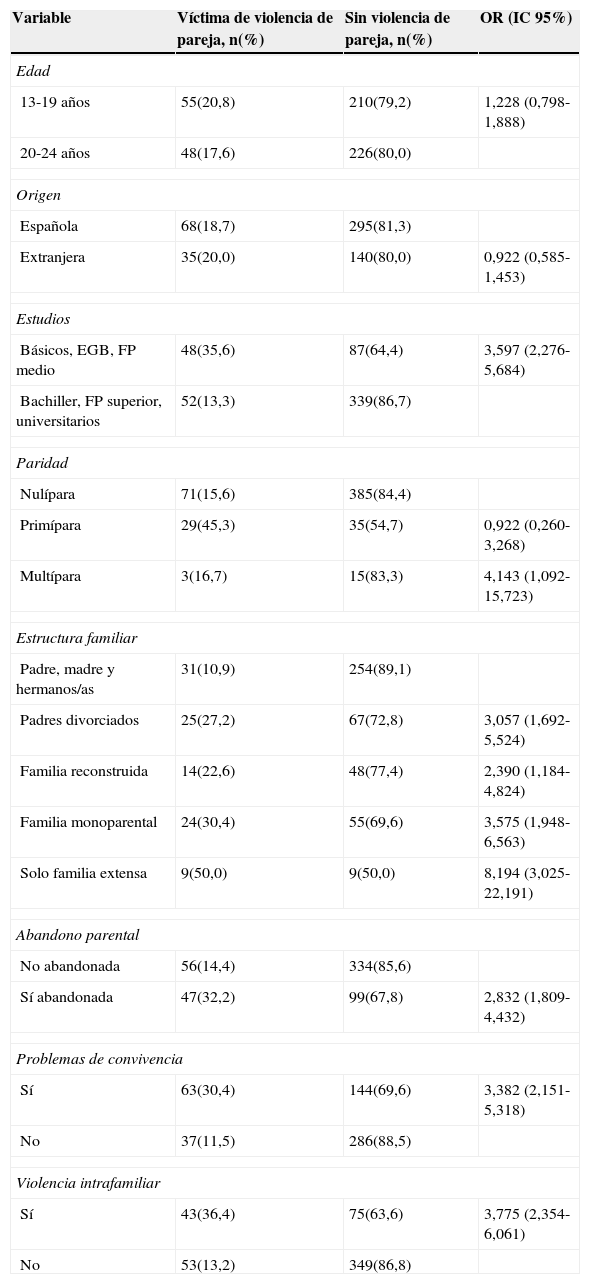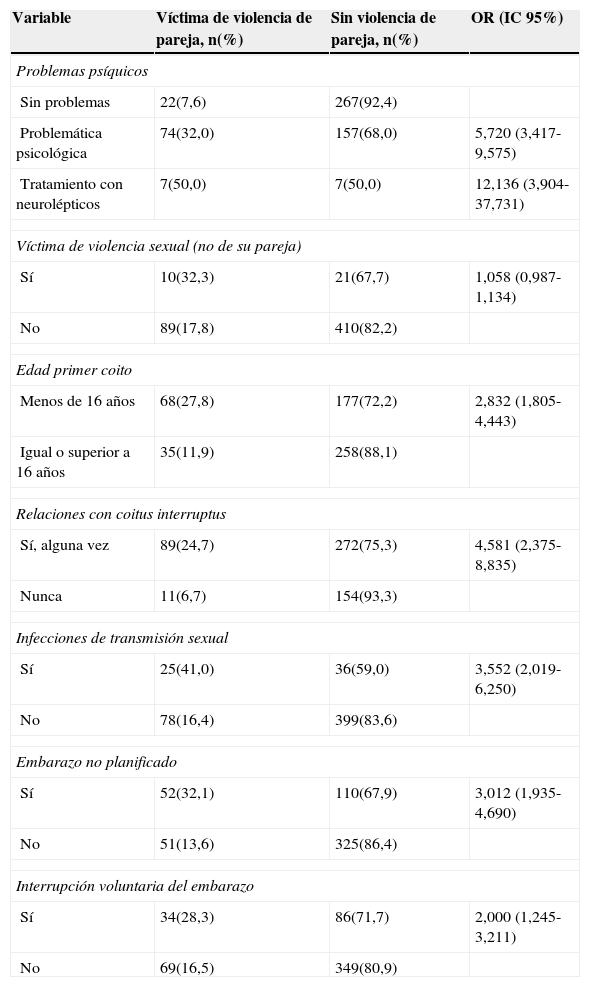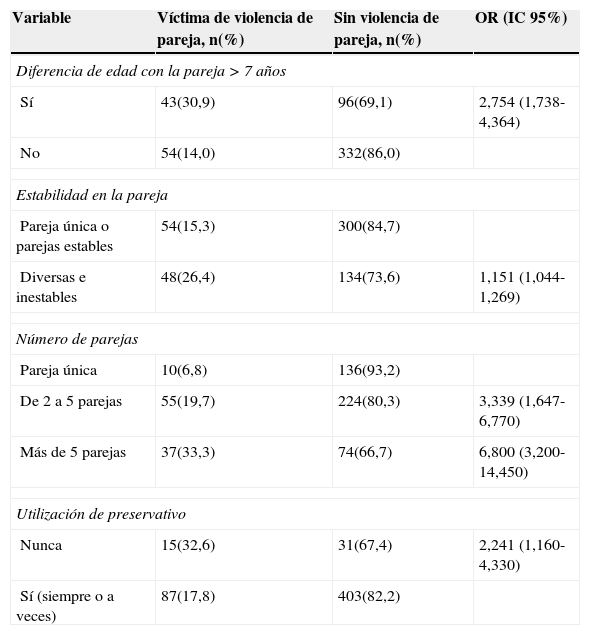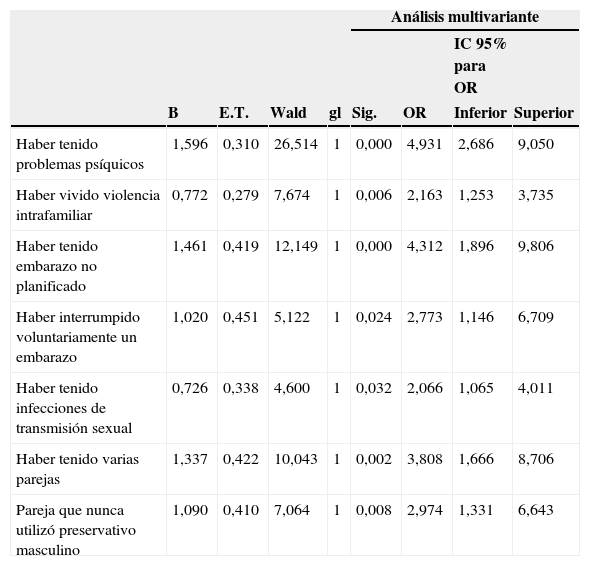La violencia de pareja (VP) hacia las adolescentes y jóvenes es un grave problema de salud pública. El objetivo de este estudio es describir la magnitud de la violencia provocada por la pareja entre las usuarias de una Consulta Joven de Anticoncepción y estudiar su asociación con diversas variables.
Usuarias y métodoEstudio descriptivo transversal. Participantes: todas las mujeres entre 13 y 24años que se atendieron en la consulta de anticoncepción durante el año 2012 (un total de 583). Mediciones: datos de historia clínica. Variable dependiente: estar o haber estado en una relación heterosexual, en la que se ha sufrido violencia por parte de la pareja o compañero íntimo (VP), frecuencia y porcentaje, con IC95%. Variables independientes: sociodemográficas, familiares y de salud sexual. Análisis bivariante, odds ratio e IC95% y análisis multivariante, regresión logística.
ResultadosCiento tres chicas (17,7%) refieren haber sufrido VP, y no consta el dato en un 7,7%. La VP se asocia a tener problemas psíquicos (OR 4,931, IC95% 2,686-9,050), haber tenido embarazo no planificado (OR 4,312, IC95% 1,896-9,806), infecciones genitales (OR 2,066, IC95% 1,065-4,011), pareja que no utilizó nunca preservativo (OR 2,974, IC95% 1,331-6,643) y haber vivido violencia familiar (OR 2,163, IC95% 1,253-3,735).
ConclusionesLas variables identificadas que se asocian a la VP nos deberían alertar cuando las jóvenes acuden a la consulta de anticoncepción, momento privilegiado para detectar si hay VP.
Partner violence (PV) in teenagers and young people is a serious public health issue. This study aims at describing the magnitude of violence caused by the partner among the female attendants of the young contraception office and studying its association with several variables.
Patients and methodologyCross-sectional study. Participants: all the women between ages of 13 and 24 who attended the contraception office during 2012, a total of 583. Measurements: medical records. Dependent variable: being or having been in a heterosexual relationship where there has been violence on the part of the partner, frequency and percentage with 95%CI. Independent variables: sociodemographic, family and sexual health variables. Bivariate analysis, odds ratio and 95%CI and multivariate analysis, logistic regression.
Results103 girls (17.7%) report having suffered PV, and a 7.7% is not documented. PV is associated to having psychological problems (OR 4.931, 95%CI 2.686-9.050), an unplanned pregnancy (OR 4.312, 95%CI 1.896-9.806), genital infections (OR 2.066, 95%CI 1.065-4.011), a partner who never used a condom (OR 2.974, 95%CI 1.331-6.643) and having domestic violence (OR 2.163, 95%CI 1.253-3.735).
ConclusionsThe variables identified with PV should alert us when young women go to the contraception office, an exceptional moment to detect whether there is PV.
Artículo
Comprando el artículo el PDF del mismo podrá ser descargado
Precio 19,34 €
Comprar ahora









